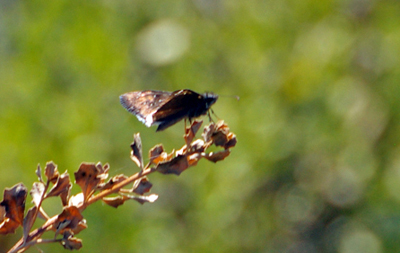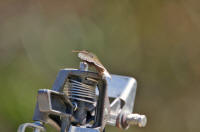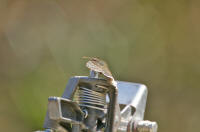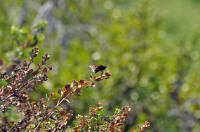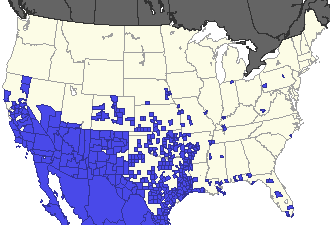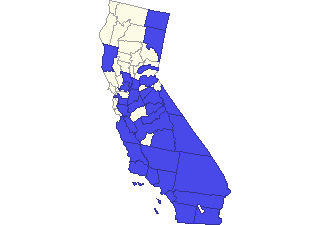|
United States Range Map |
|
California Range Map |
|
|
|
|
|
|
Identification: |
|
Life history:
|
|
Forewing is narrow and pointed, hindwing is somewhat
triangular. Upperside of wing is black; forewing has a dull
brown patch at the end of the cell. Hindwing has white
fringe on the outer margin. Male has a costal fold
containing yellow scent scales; female has a patch of scent
scales on the 7th abdominal segment. |
|
Life history: Eggs are laid singly under host plant leaves.
Caterpillars feed on leaves and rest in shelters of rolled
or tied leaves. Caterpillars from the last brood hibernate. |
|
Flight: |
|
Wing Span: |
|
Three broods from March-December. |
|
1 5/16 - 1 3/4 inches (3.4 - 4.5 cm). |
|
Caterpillar Hosts: |
|
Adult Food: |
|
Various legumes including New Mexican locust (Robinia
neomexicana), bur clover (Medicago hispida), deerweed (Lotus
scoparius), desert ironwood (Olneya tesota), and vetch (Vicia
species). |
|
Flower nectar. |
|
Habitat: |
|
Season: |
|
Deserts, warm or arid lowlands, roadsides. |
|
|
|
Remarks: |
|
Conservation: |
|
|
|
Not usually required.
NatureServe Global Status:
Demonstrably secure globally, though it may be quite rare in
parts of its range, especially at the periphery. |
|
Sources used to
Construct this Page: |
|
|
|
|
